The Time Travelers' Handbook (2 page)
Read The Time Travelers' Handbook Online
Authors: Lottie Stride


The wind is blasting your ears, and you are swaying back and forth like part of a circus act. You've landed in the crow's nest of an English warship. Unfortunately, a crow's nest is a little lookout platform three-quarters of the way up the ship's mast.
All around you other ships are racing through the waves. Your ship is part of an English fleet chasing the mighty warships of a fleet known as the Spanish Armada away from the English coast.
Top Tactics
You're spotted, and the sailors suspect you of being a stowaway. They take you to the commander, Sir Charles Howard. Unfortunately, he has been known to keelhaul rebellious sailors, having them dragged beneath the ship by a rope. They would be cut to ribbons by the barnacles below. Luckily, he's in a good mood. After months of fierce fighting, the Spanish are on the run. So, he's quite happy to quaff a tot of rum and tell you his tactics:

⢠Sir Charles is using fast, nimble ships. The Spanish galleons are much bigger, and when it comes to turning, they are a lot slower.
⢠The English crews are experienced sailors, whereas the Spanish have packed their ships with soldiers. The Spanish plan is to get close to the enemy ships and board them, but the English sail their ships too well to let the Spanish get near.
⢠Sir Charles is making good use of cannons. The English go in really close, attack the Spanish from the sides, and fire at short range. They have better long-range guns, too, which means they can fire more accurately at the Spanish from farther away.
⢠Sir Charles's commanders have had a brainstorm. One night, they set eight of the oldest ships afire. The wind blew them into the Spanish fleet and the Spanish were forced to sail off up the coast to get away from them.
Life Afloat
Life on board seems so exciting, you decide to join the crew for supper. Unfortunately, first on the menu is salted meat and soggy crackers with little bugs called weevils in them. As night falls, a crew of 40 men eating, fighting, and sleeping in the same clothes for months on end does not make below decks smell good. After one night in the dark, damp, crowded, and smelly ship, you will never complain about sharing a room with your brother again.

What âKnot' To Do
In the morning, a sailor tells you Sir Charles has insisted you earn your keep. He shows you how to tie some essential knots, including a bowline, which is used to attach a rope to a post or railing.
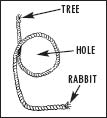
1.
Make a small loop a little way along the rope. It helps if you imagine the loop is a rabbit hole, the tip of the rope is the rabbit itself, and the rest of the rope is a tree.
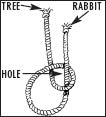
2.
Feed the rabbit up through the hole as shown.
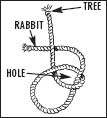
3.
Pass the rabbit around the back of the tree.
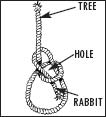
4.
Pass the rabbit down into the hole.
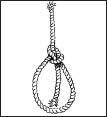
5.
Pull it tight.

Yuck! All around you are wooden trays packed with pale, grayish, squishy-looking worms. There are millions of themâmunching on leaves and wriggling about in their own droppings.
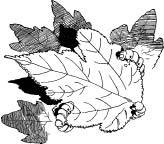
You've landed in Ancient China, right in the middle of a silkworm farm. Beside you, a girl is fishing a silkworm out of one of the trays. Her name is Mei Ying and she tells you that the worms are not actually worms at all, but caterpillars of the silk moth. The caterpillars are eating mulberry leaves, and have been eating nonstop for about six weeks. They hatched from tiny little eggs and have shed their skin four times to become the fat caterpillars they are now.
Mei Ying picks one up to show it to you up close. It is shooting what looks like little threads out of its mouth and she tells you that this is silk. The caterpillar is making a cocoon.
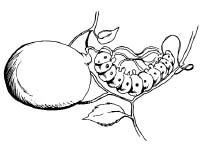
Mei Ying puts the caterpillar into a wooden frame next to lots of others that have already finished their cocoons. She says that the silk is actually the caterpillar's hardened saliva, or spit. Each caterpillar wraps itself in more than a half mile of silk. She holds up a finished cocoon and explains the caterpillar inside is busy turning itself into a moth. Unfortunately, none of these caterpillars is ever going to be a moth.
She leads you to a large pan of boiling water that contains lots of the cocoons bobbing about like white cotton balls. When the cocoons are thrown in, the caterpillar inside dies, and the thread softens and is easier to work with. Mei Ying says the cocoons are ready for her mother to work on. She gets some chopsticks and starts fishing cocoons out of the pan and putting them in a basket. This looks very easy, but when you try, they keep dropping back in.

Mei Ying hears a noise and asks you to hideâshe will be in great danger if she is found talking to you. The process of spinning the caterpillar silk into thread and weaving it into cloth is a closely guarded secret. The Chinese are the only people in the world who know how to do it, and they make lots of money from trading their fine cloth all over the world. Revealing the secret is punishable by death. From your hiding place, you see Mei Ying's mother come in. She takes a cocoon from the basket and sits at a kind of spinning wheel. She examines the cocoon, looking for the end of the silk thread. When she finds it, she uses a silk reel to unravel the cocoon.

As you watch, you find it hard to believe that little fat caterpillars can produce so much thread. Mei Ying has told you that even though a single caterpillar can produce more than a half mile of thread, the thread is so fine that it can take up to 100 cocoons to make a single scarf.
Next, Mei Ying's mother twists 10 to 12 silk threads together to form a stronger thread. These can then be dyed different colors and used for embroidery or woven into cloth. The wonderful silk cloth produced will be packed and transported along a route known as the
Old Silk Road
.
